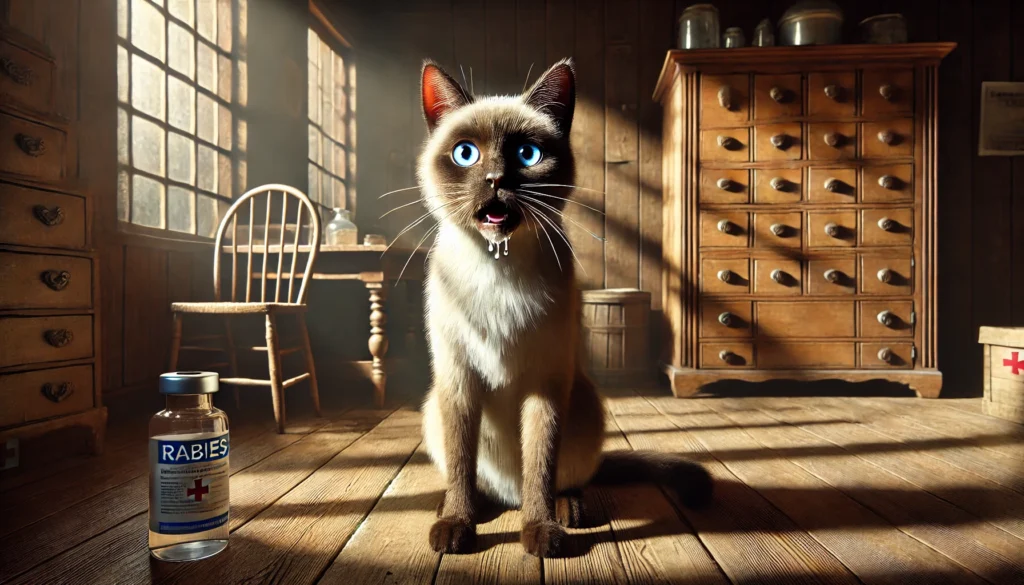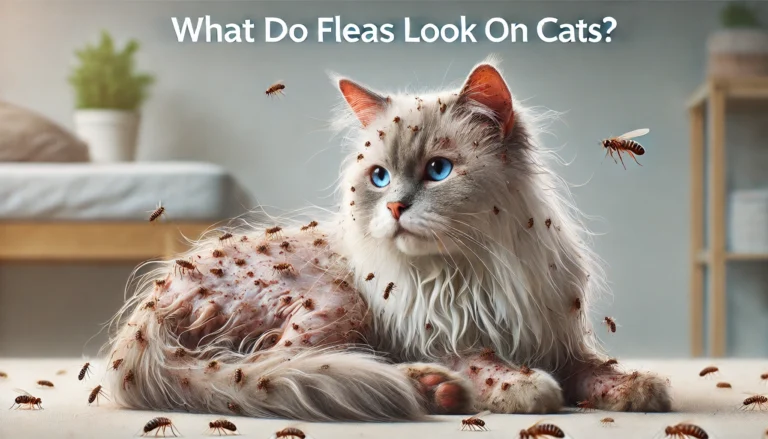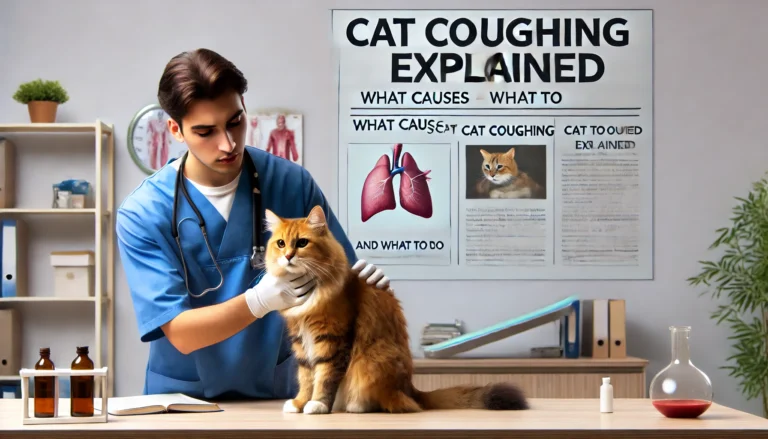Rabies in Cats: What Is It, and What Causes It?

Introduction to Rabies in Cats
Rabies, a grave threat to cats and humans alike, is an infectious disease caused by the rabies virus. This article explores the progression, symptoms, and preventive measures for rabies in cats, offering vital information to cat owners on recognizing and managing this fatal condition.
What Is Rabies?
Overview of Rabies
The rabies virus targets the central nervous system, causing acute encephalitis in mammals, including house cats and humans. This section would explain the virus’s nature, touching on the etiology of rabies and the causative agent that leads to the severe symptoms observed in infected animals.
Symptoms of Rabies in Cats
Rabies symptoms in cats begin subtly, often with signs that might be mistaken for other ailments. Initial symptoms such as behavioral changes, like anxiety rabies, may progress to more alarming manifestations like aggression, a hallmark of the furious stage. Photos of animals with rabies could illustrate these changes for clarity.
How Do Cats Contract Rabies?
Common Transmission Routes
This part would delve into how domestic and stray cats can contract the virus, primarily through the saliva of infected animals, typically via bites. The discussion could include how rabies virus symptoms in animals provide early warning signs, such as changes in a cat’s behavior or the onset of more severe symptoms like paralysis.

Risk Factors for Cats
Factors like outdoor access and exposure to wildlife increase the risk of a cat contracting rabies. Notably, unvaccinated cats are at a higher risk, highlighting why the rabies vaccine is recommended for cats.
The Stages of Rabies in Cats
Prodromal Stage
The onset of rabies symptoms in cats is marked by subtle behavioral changes. Owners might notice their cat exhibiting signs of anxiety or slight aggression, which could escalate rapidly. It’s crucial to recognize these early signs of rabies in cats, such as dilated pupils or slight behavioral abnormalities.
Furious Stage
Often, a rabid kitten may exhibit disproportionate aggression, a stark departure from typical kitten behavior. This stage is characterized by erratic behavior, visible signs of rabies in cats’ eyes, and even hallucinatory aggression (e.g., attacking invisible objects).
do you know
Tapeworms are a prevalent issue in felines that can cause significant discomfort and health problems. Understanding the nature of tapeworms, recognizing the symptoms, and knowing how to treat and prevent these parasites are crucial for keeping your cat healthy.
Paralytic Stage
Progressing from the furious stage, the paralytic stage marks a rapid decline in the cat’s health, ultimately leading to death if untreated. Symptoms like drooling and muscle weakness become pronounced, confirming the rabies progression in cats. This phase often confuses owners, as symptoms can mimic other conditions, but rapid progression is a key differentiator.
Diagnosis of Rabies in Cats
Clinical Diagnosis
Given the difficulty of diagnosing rabies in live animals, this section would discuss how veterinarians assess symptoms and exposure history to make a preliminary diagnosis. Rabies testing in cats, usually done post-mortem, confirms the disease through methods like the direct fluorescent antibody (DFA) test.
Laboratory Tests
A detailed look at how lab tests confirm rabies would follow, noting the tests’ ability to detect rabies virus antigens in brain tissue obtained after death.
Prevention of Rabies in Cats
Vaccination
The cornerstone of rabies prevention in cats is vaccination. This segment would discuss the recommended schedules for rabies shots in cats and the longevity of vaccine efficacy, emphasizing how a vaccinated cat is shielded from the virus’s fatal effects.
Reducing Risk of Exposure
Practical tips for reducing a cat’s risk of contracting rabies, such as leash laws and controlling interactions with wildlife, would be detailed here. Owners are advised on how to manage potentially rabid animals and the importance of reporting suspected cases of rabies to local health authorities.
Conclusion of Rabies in Cats
Understanding rabies in cats is crucial for preventing its spread and ensuring the safety of pets and their human companions. Recognizing early signs, such as a cat with rabies behavior changes or initial mild symptoms, can save lives. This article aims to arm cat owners with the knowledge needed to protect their furry family members from this fatal disease.
Can you get rabies from a cat?
Yes, you can get rabies from a cat if it is infected with the rabies virus and it bites or scratches you, allowing its saliva to come into contact with your skin or mucous membranes.
How to know if a cat bite has rabies?
You cannot know immediately if a cat bite has transmitted rabies. The best course of action is to seek medical advice and observe the cat for signs of rabies, ideally by quarantining and monitoring it.
How common is rabies in cats?
Rabies in cats is less common in countries with routine pet vaccination practices but can still occur, particularly in areas with higher populations of unvaccinated stray cats.
How long does rabies take to show in cats?
The incubation period for rabies in cats can vary widely, typically from two weeks to several months, but symptoms usually develop within two to six weeks.
How to tell if a cat has rabies?
Signs of rabies in cats include behavioral changes, aggression, paralysis, excessive drooling, difficulty swallowing, and seizures.
Can rabies be cured in cats?
No, there is no cure for rabies once symptoms appear. Rabies is almost always fatal once clinical signs develop.
Can cats with rabies still eat?
Cats with rabies may have difficulty eating due to throat and muscle paralysis leading to an inability to swallow.
Do cats with rabies drink water?
Cats with rabies may want to drink water but often cannot due to paralysis affecting their ability to swallow.
Can a cat with rabies live long?
No, a cat with rabies will not live long after symptoms appear; death typically occurs within a few days to a week.
Is house cat safe for rabies?
A house cat that is regularly vaccinated and kept indoors is generally safe from rabies.






